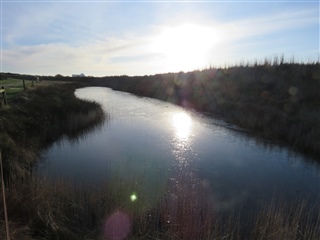After a week of windy, and at times very wet, weather, it's been lovely to enjoy a couple of proper winter days: cold, clear and icy with crisp blue skies and very little wind.

Of course, there is a downside to such lovely weather: you really do need to wear lots of layers and keep moving. In fact, you may wish to wear wellington boots too, as some of the paths are bit wet, with Sluice completely impassable on foot…